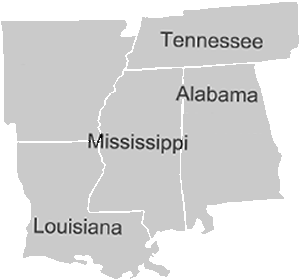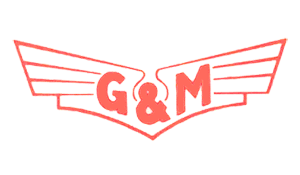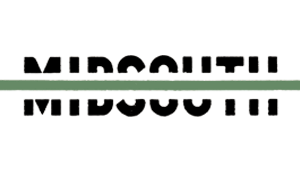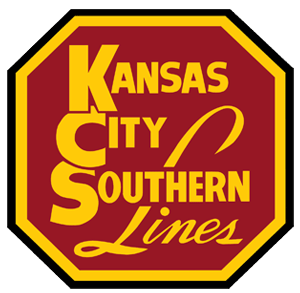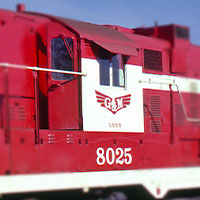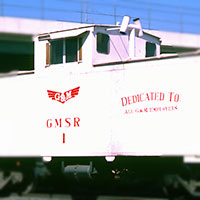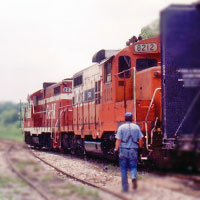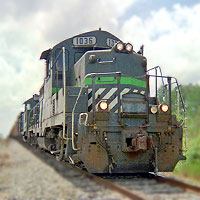
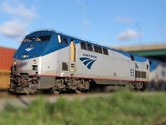




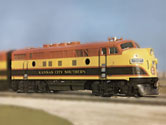

Regional

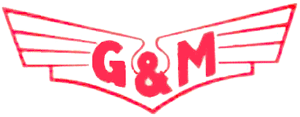 |
Gulf & Mississippi / SouthRail"713 Miles With All the Right Connections" |

Gerhard Anderson
In the aftermath of the Great Depression and World War II, many railroads were driven out of business by competition from the Interstate highways and airlines. The rise of the automobile led to the end of passenger train service on most railroads. Trucking businesses had become major competitors by the 1930s with the advent of improved paved roads, and after the war, they expanded their operations as the highway network grew and acquired increased market share of cargo business. However, the railroads continued to be regulated by the Interstate Commerce Commission (ICC) and a complex system for setting shipping rates.
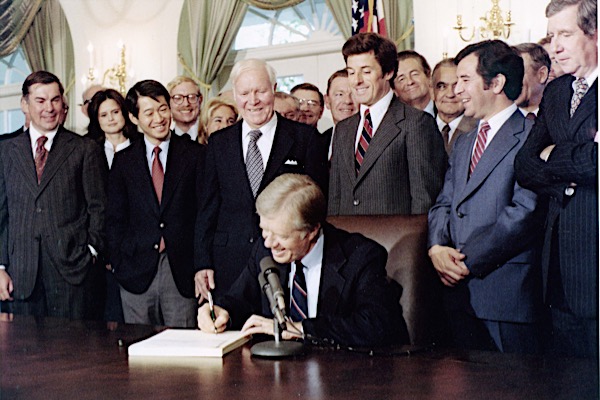 The Staggers Act of 1980 followed the Railroad Revitalization and Regulatory Reform Act of 1976 (often called the "4R Act"), which reduced federal regulation of railroads and authorized implementation details for Conrail, the new northeastern railroad system. The 4R reforms included allowance of a greater range for railroad pricing without close regulatory restraint, greater independence from collective rate making procedures in rail pricing and service offers, contract rates, and, to a lesser extent, greater freedom for entry into and exit from rail markets.
The Staggers Act of 1980 followed the Railroad Revitalization and Regulatory Reform Act of 1976 (often called the "4R Act"), which reduced federal regulation of railroads and authorized implementation details for Conrail, the new northeastern railroad system. The 4R reforms included allowance of a greater range for railroad pricing without close regulatory restraint, greater independence from collective rate making procedures in rail pricing and service offers, contract rates, and, to a lesser extent, greater freedom for entry into and exit from rail markets.
Major railroad shippers also continued to believe that they would be better served by more flexibility to arrive at tailored arrangements that were mutually beneficial to a particular shipper, and to the carrier serving a particular shipper. The judgments supported a second round of legislation, the Staggers Act.
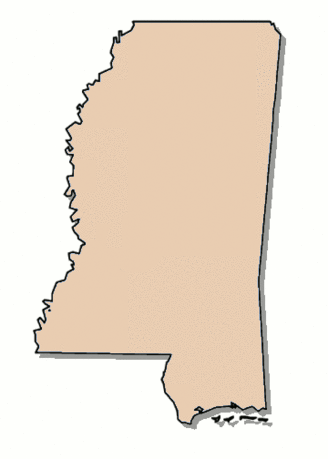

he Gulf & Mississippi Railroad was a short-lived regional railroad, utilizing over 700 miles of mostly former Gulf, Mobile & Ohio trackage in eastern Mississippi and western Alabama purchased from the Illinois Central Gulf in 1985. The passage of the federal Staggers Act in 1980 allowed Class 1 systems like the ICG to spin off massive quantities of secondary and tertiary trackage to newly created shortlines and regionals for handling forest, paper, and chemical products. The Gulf & Mississippi was one of the first to take advantage of this new arrangement, building a large regional system from three historic lines in Mississippi divested by the ICG. In an attempt to cultivate online freight business lost during the ICG year, GMSR created four operating districts:
- Meridian District: Mobile, Al north through Meridian to Corinth, Ms — the former mainline of the Mobile & Ohio (later Gulf, Mobile & Ohio)
- Lousiville District: Laurel, Ms north to Aberdeen: former mainline of the Gulf, Mobile & Northern (later GM&O) between Laurel and Ackerman, plus a former Illinois Central segment between Ackerman and Aberdeen
- New Albany District: Woodland, Ms north to Middleton, Tn — former mainline of Gulf, Mobile & Northern (later GM&O)
- Tuscaloosa District: Artesia, Mississippi east to Tuscaloosa, Alabama — former Mobile & Ohio mainline (later GM&O)

GMSR route lineage map / RWH
The creation of the Gulf & Mississippi was a bold venture, an attempt to restore both the operating culture and the customer service footprint of the former Gulf, Mobile & Ohio in Mississippi. Traffic included forest products, paper, paper products, and chemicals. Enginehouses were kept at Columbus and Tuscaloosa, operations were directed from offices in Columbus, classification was handled in the yard at Artesia, and 250 freight cars were acquired for shippers. Nevertheless, the Deep South's first regional spinoff was plagued by challenges from the start. The Illinois Central Gulf had performed minimal upkeep on its secondary lines in Mississippi, thus the cash-strapped GMSR could never make adequate headway on restoring deteriorating roadbeds and replacing worn-out and under-weight rail. Furthermore, unlike its eventual corporate parent MidSouth, the GMSR was a north-south regional in a profitable east-west territory. By 1988, less than five years into its existence, the road was facing bankruptcy.
The adjacent MidSouth Rail Corporation — a second Staggers-era ICG spinoff, yet much more successful — acquired the struggling GMSR system in April of 1988 through a new subsidiary it called SouthRail Corporation. Connecting to the MidSouth mainline at Newton and Meridian, GMSR traffic patterns were merged into the overall plan of the MidSouth to develop the profitable east-west "Meridian Speedway." MidSouth and SouthRail were themselves purchased by Kansas City Southern in 1994, and as of 2021 KCS will be merged into the Canadian Pacific system now spanning 3 countries. Despite all the mergers, most of the GMSR trackage remains in service today; much of it in the hands of new shortline operators:
- Alabama Southern Railroad — a WATCO shortline operating the former M&O mainline between Columbus, Ms and Brookwood, Al.
- Meridian Southern Railway — an independent shortline operating the former M&O mainline between Meridian and Waynesboro, Ms. The segment between Waynesboro and Mobile has been abandoned.
- Mississippi Southern Railroad — a WATCO shortline operating the former GM&N mainline between Ackerman and Bay Springs, Ms. The segment between Bay Springs and Laurel has been abandoned.
- Ripley & New Albany Railroad — a Pioneer Lines shortline operating the former GM&N mainline between New Albany and Ripley, Ms. The segment between Ripley and Middleton, Tn is out of service.
- Tanglefoot Trail — a rails-to-trails walking path over the former GM&N mainline between Houston and New Albany, Ms, 44 miles long.
- Kansas City Southern continues to operate the balance of the former M&O mainline, between Meridian and Corinth through Artesia, Ms.
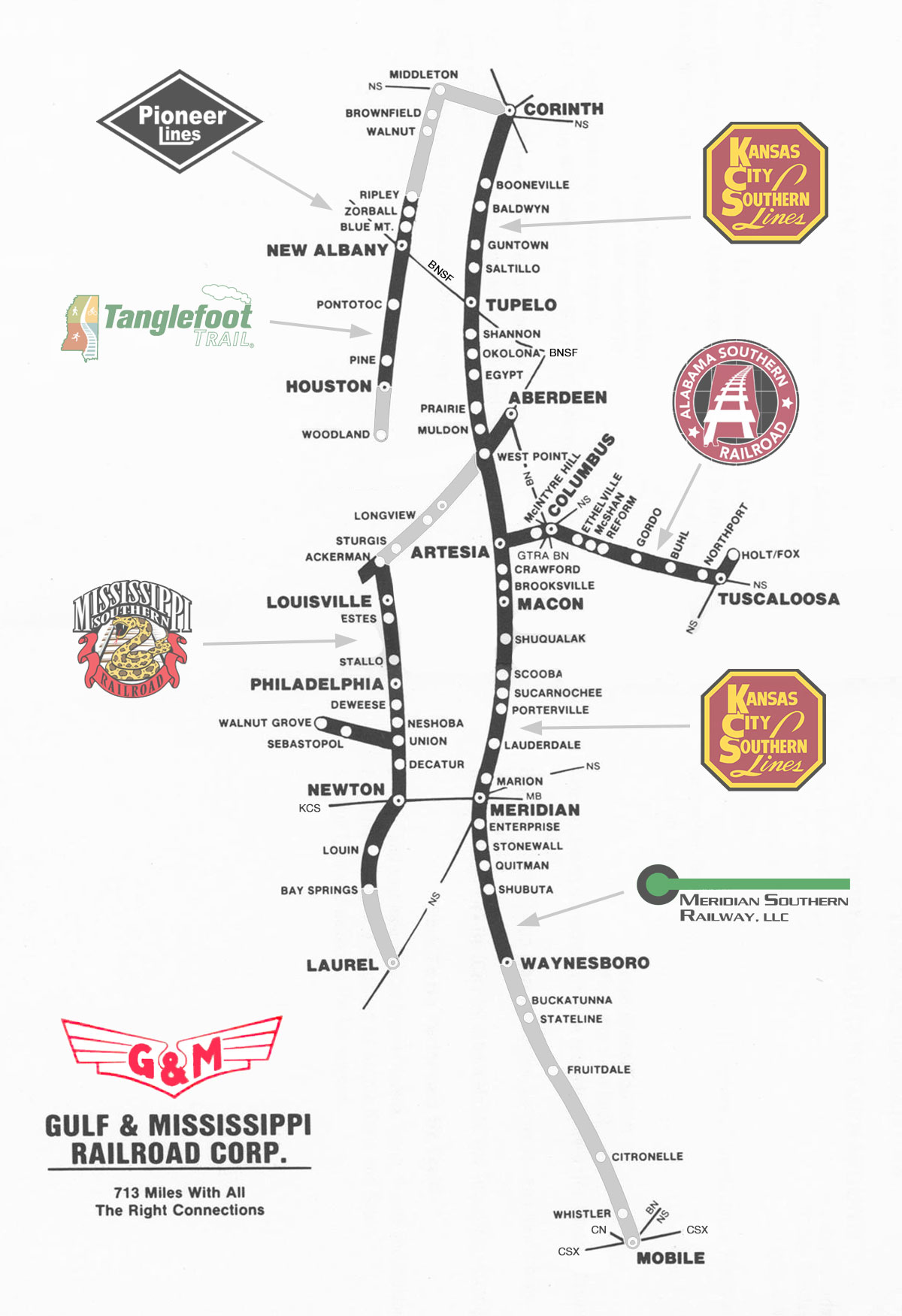
2021 status map of former GMSR trackage / RWH
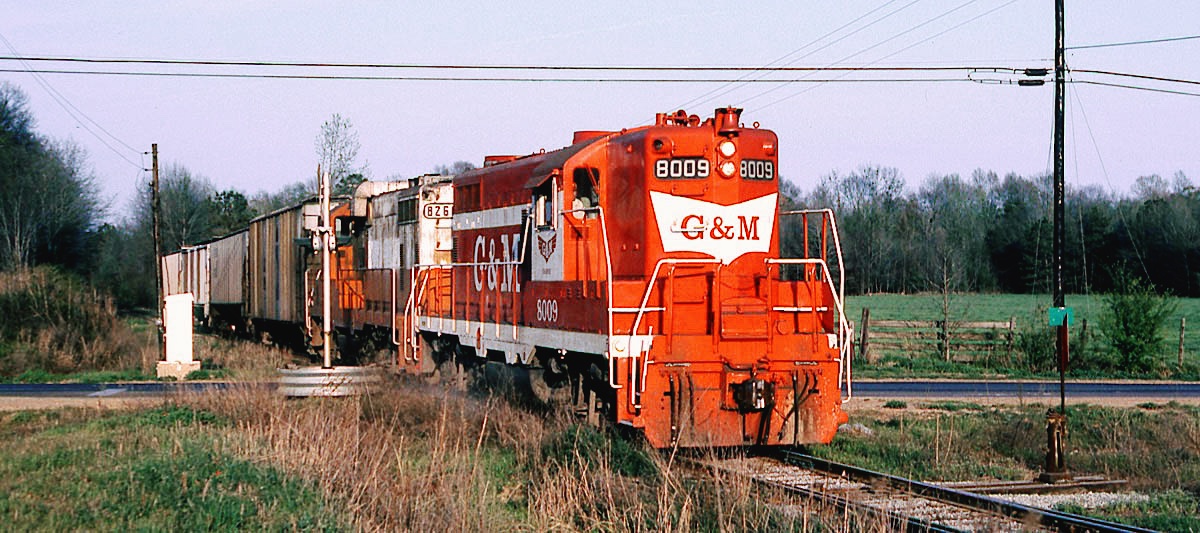
Warren Calloway / collection

at a glance
| G&M | SouthRail | ||
|---|---|---|---|
| Miles operated | 713 | 686 | |
| Locomotives | 48 | 46 | |
| Freight cars | 247 | 849 | |
| Reporting marks | GMSR, SR | ||
| Headquarters | Columbus, Ms | ||
| Successors | MidSouth Kansas City Southern | ||
 Clippings
Clippings
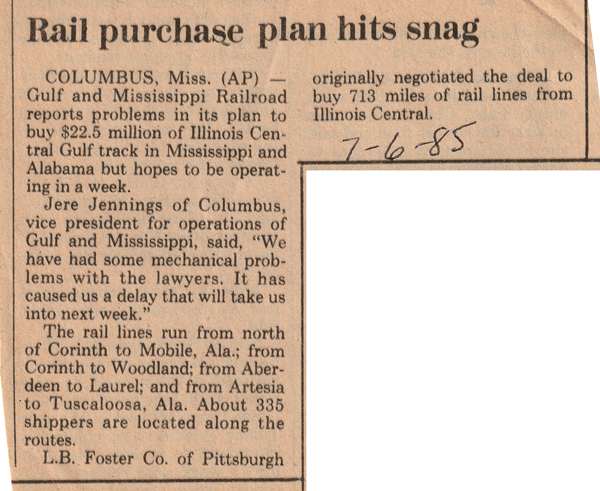
collection
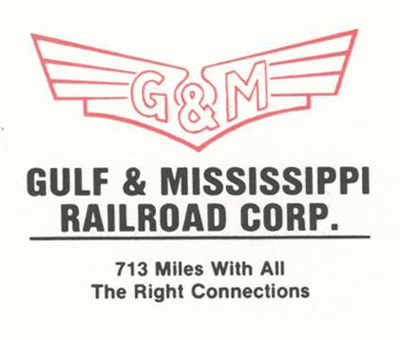
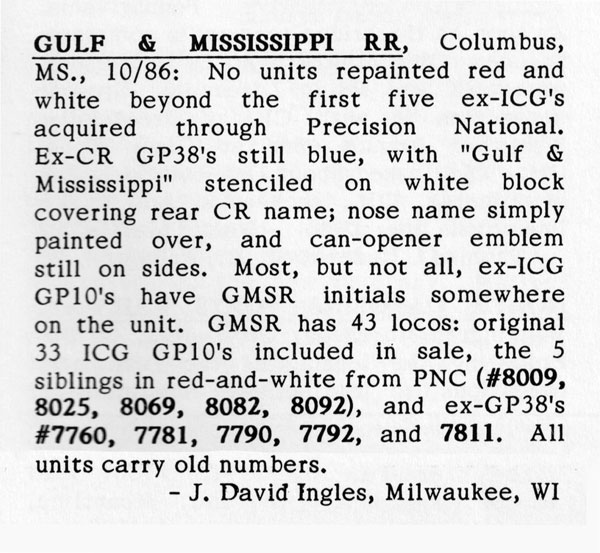
from The Short Line magazine #82
- Dec 1986 / collection
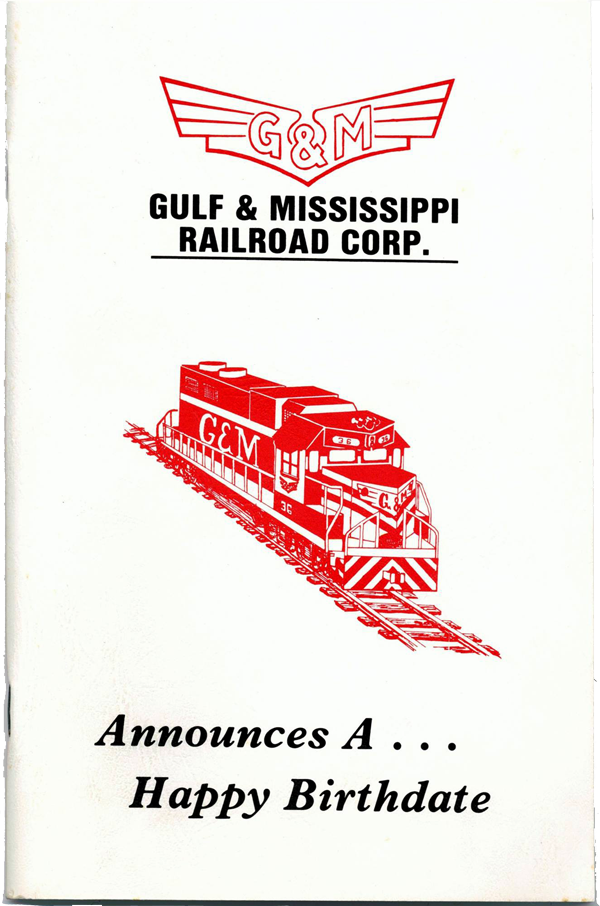
collection
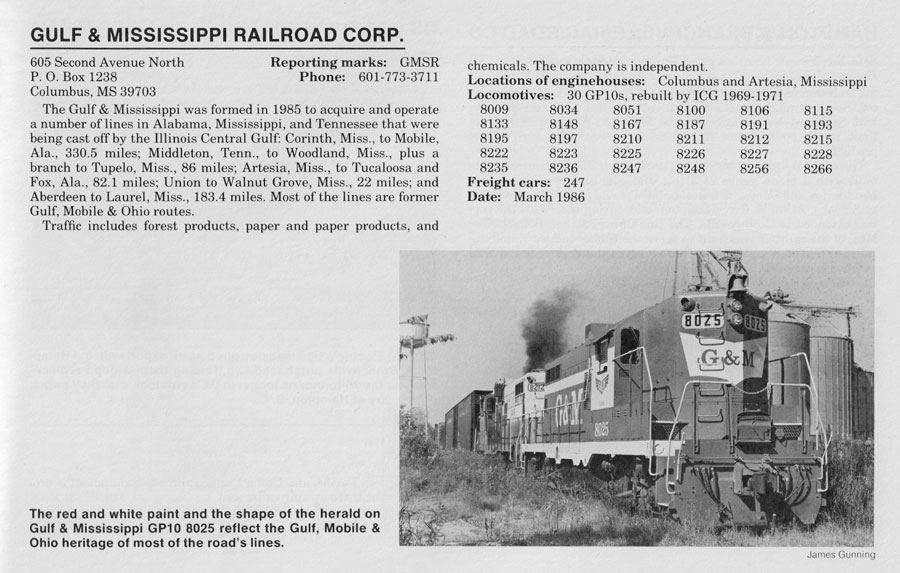
from American Shortline Railway Guide - 3rd edition 1986
by Edward Lewis / collection
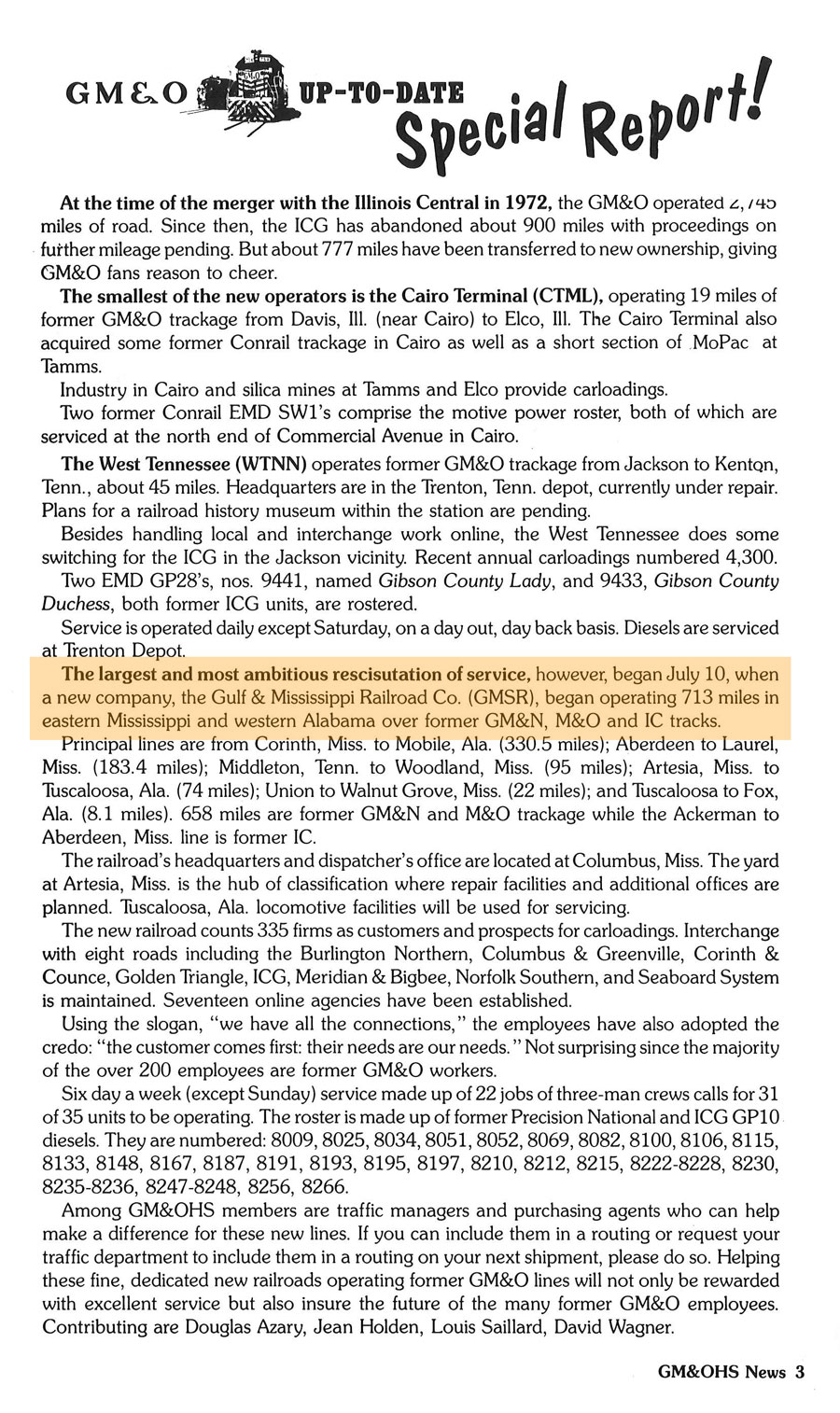
from Gulf Mobile & Ohio Historical Society News / collection
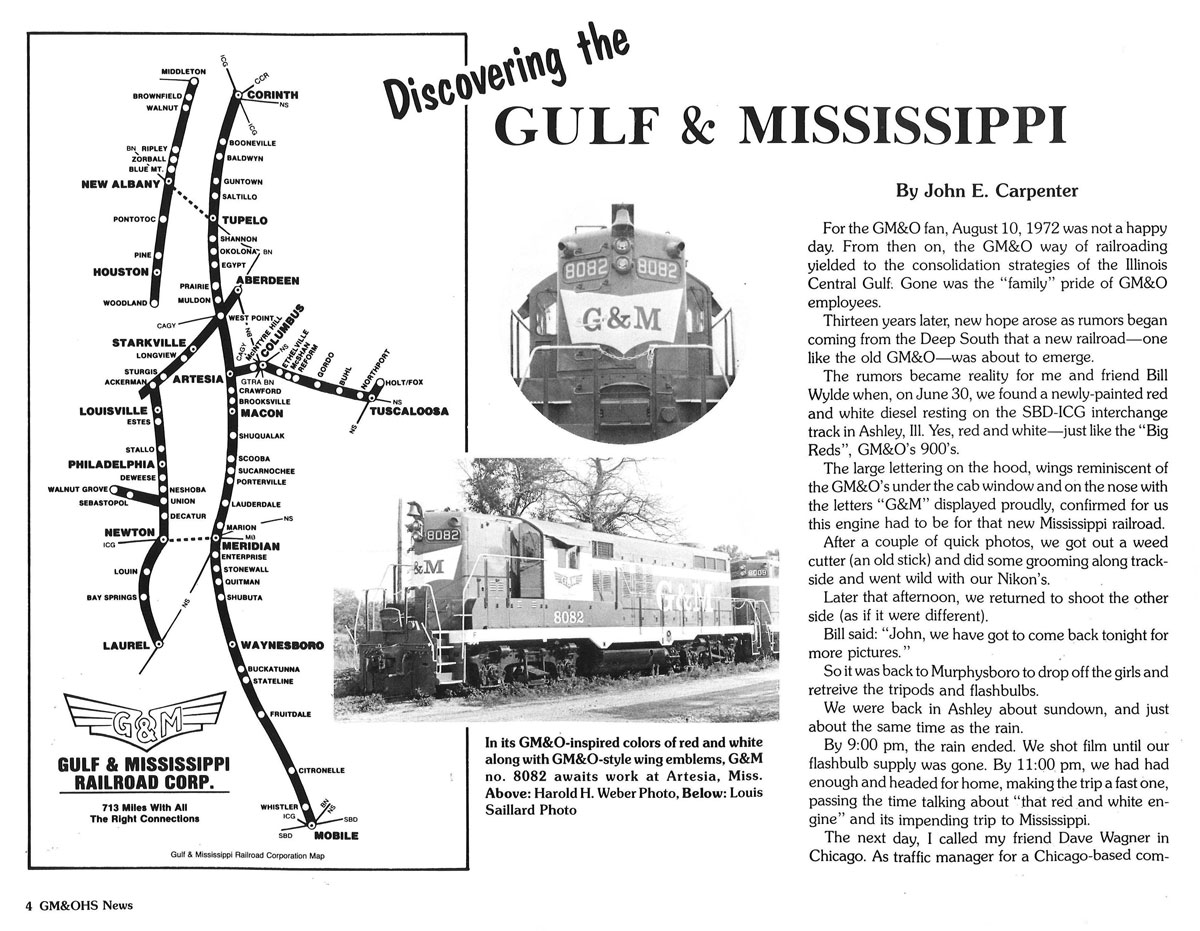
from Gulf Mobile & Ohio Historical Society News / collection
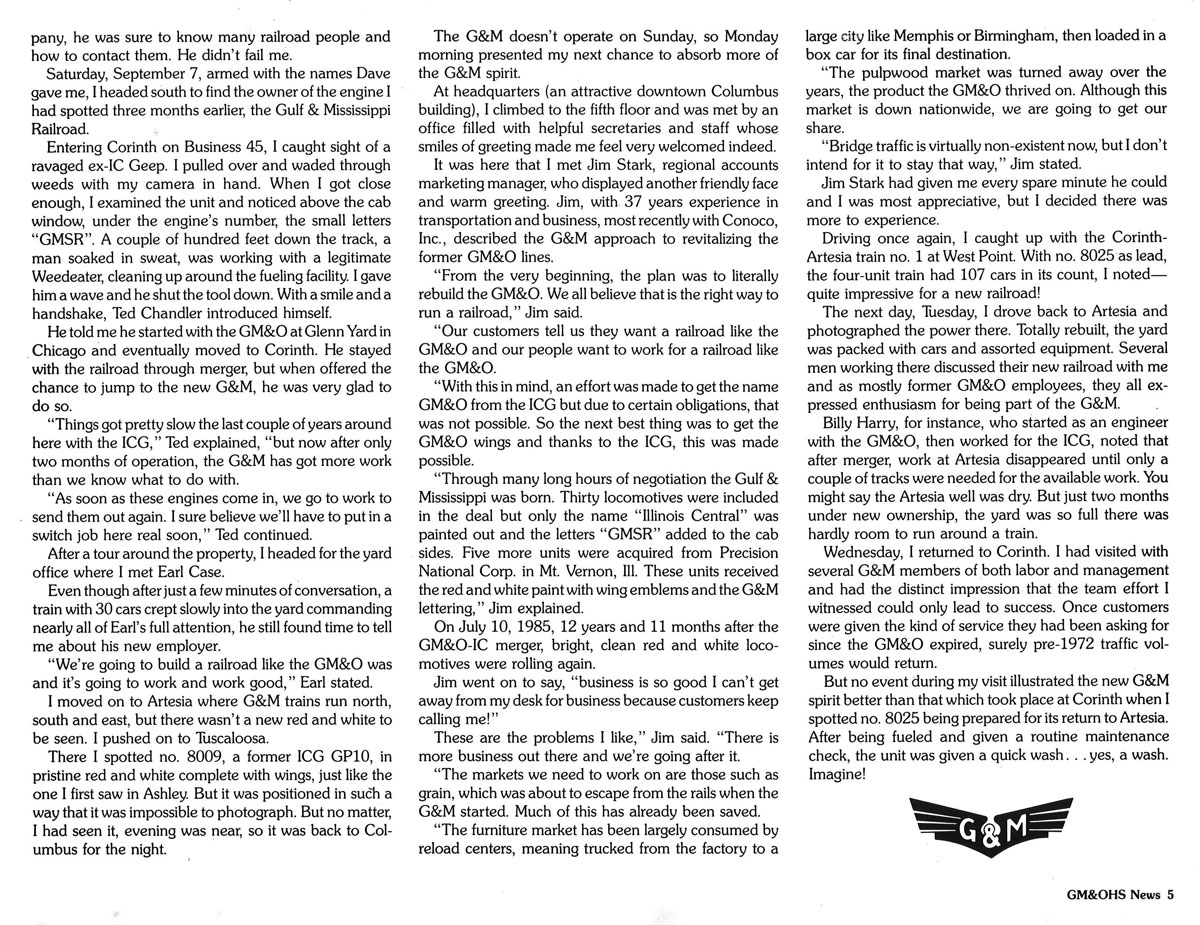
Publications

1985 GMSR employee timetable / collection
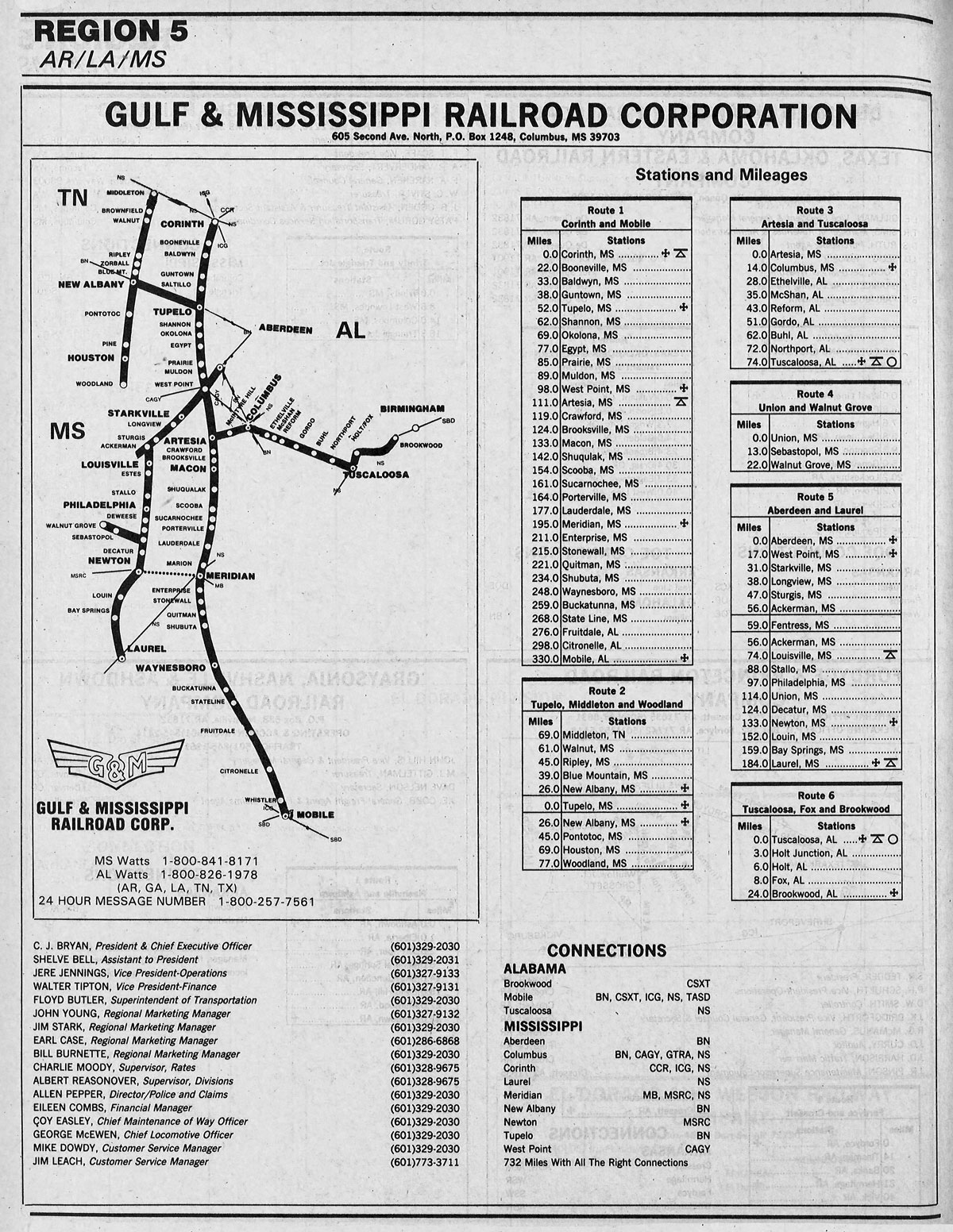
1986 Official Guide ad / collection
 Lagniappe
Lagniappe
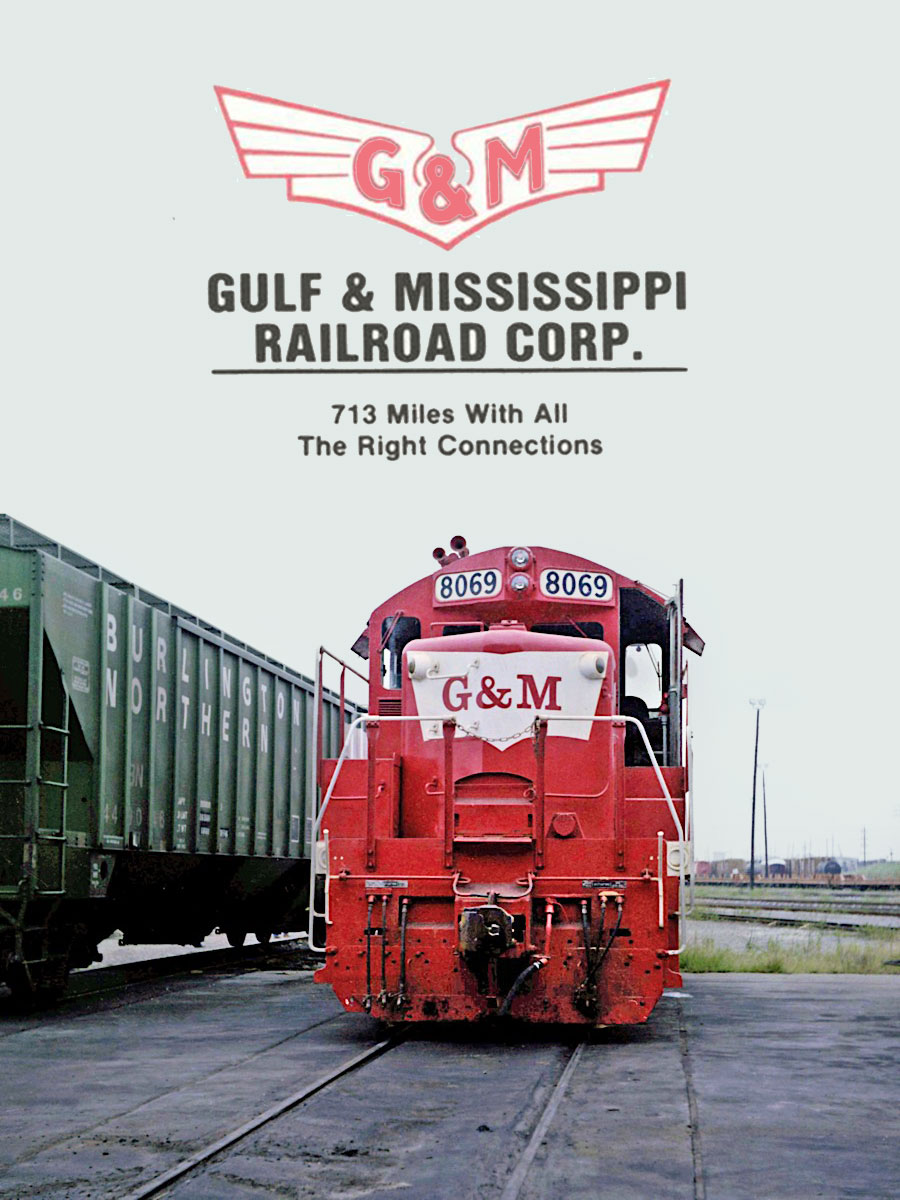
Well Connected
photo JCH / artwork RWH
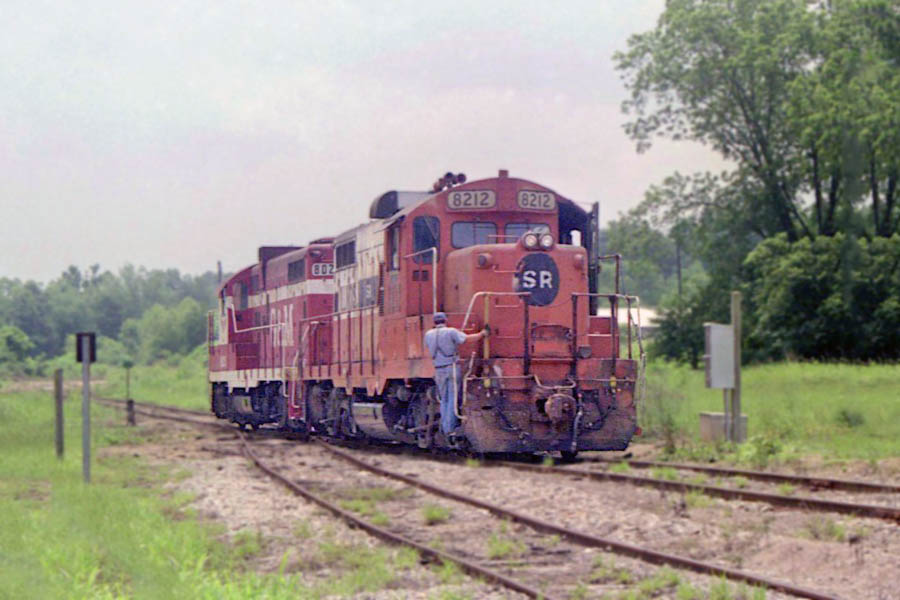
"Shove South, Eighty Twenty Five"
Bay Springs, Ms / Jul 1989 / RWH
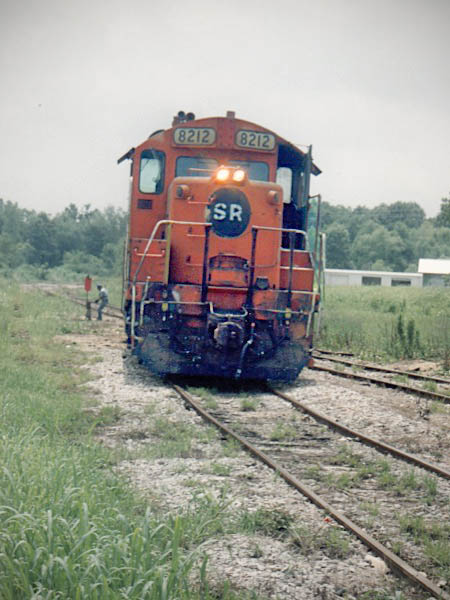
SouthRail Sway
Bay Springs, Ms / Jul 1989 / RWH
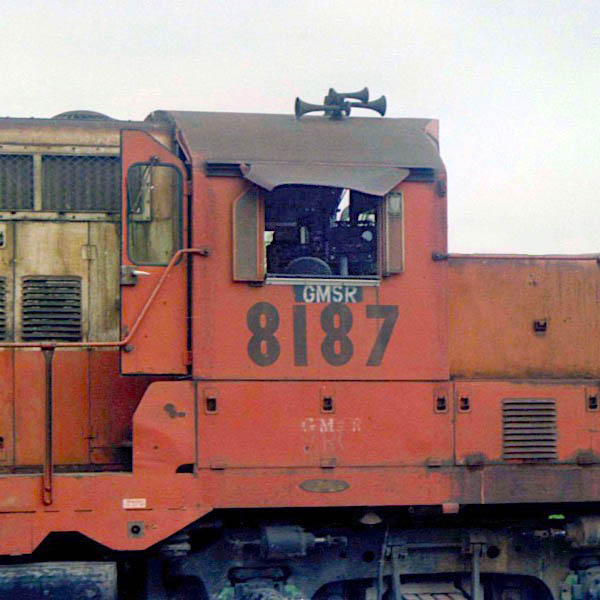
One Well Worn Workhorse
Jul 1989 / RWH

West Point Wind Down
West Point, Ms / Jul 1989 / JCH
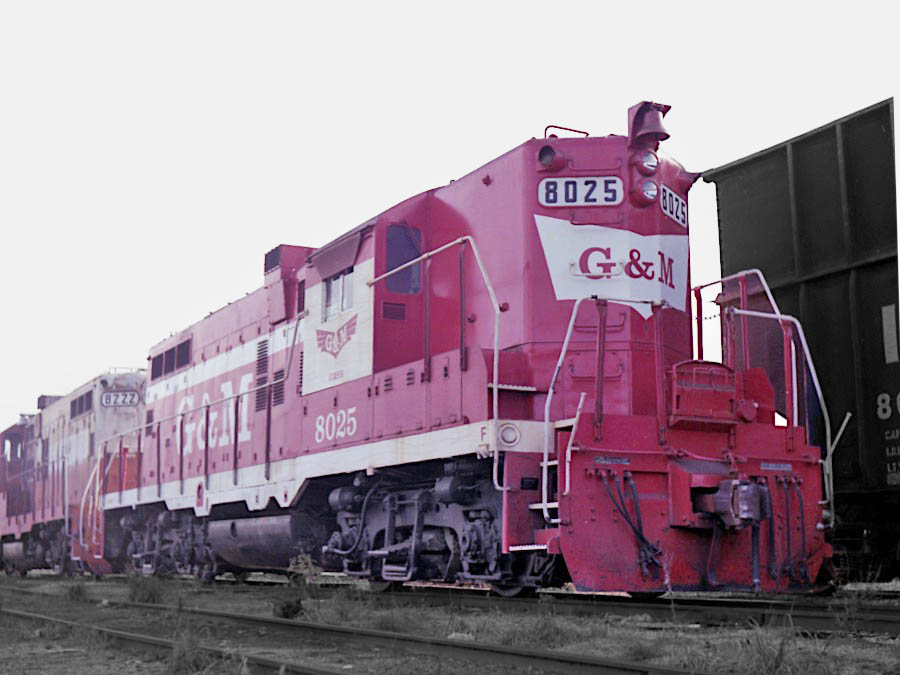
Give Me Wings to Fly
Laurel, Ms / Sep 1986 / JCH
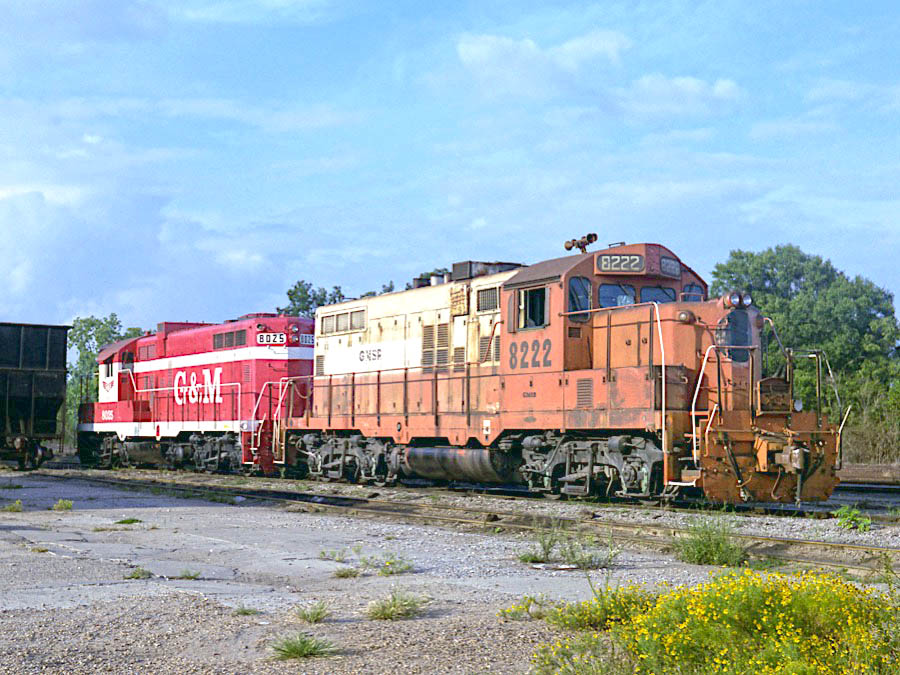
Sunny September Sunday
Laurel, Ms / Sep 1986 / JCH
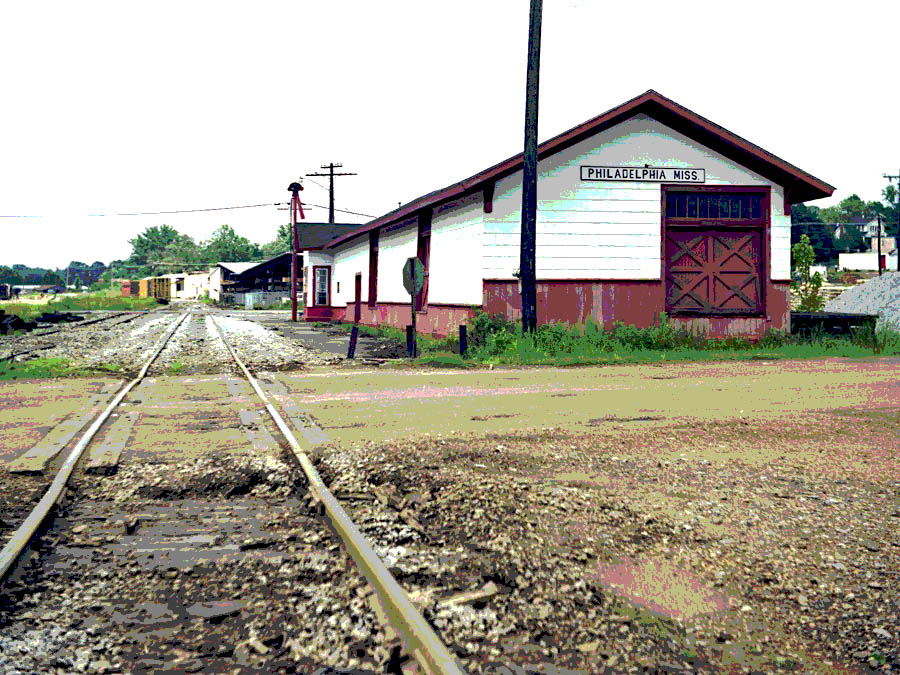
The Streets of Philadelphia
Philadelphia, Ms / Jul 1989 / RWH
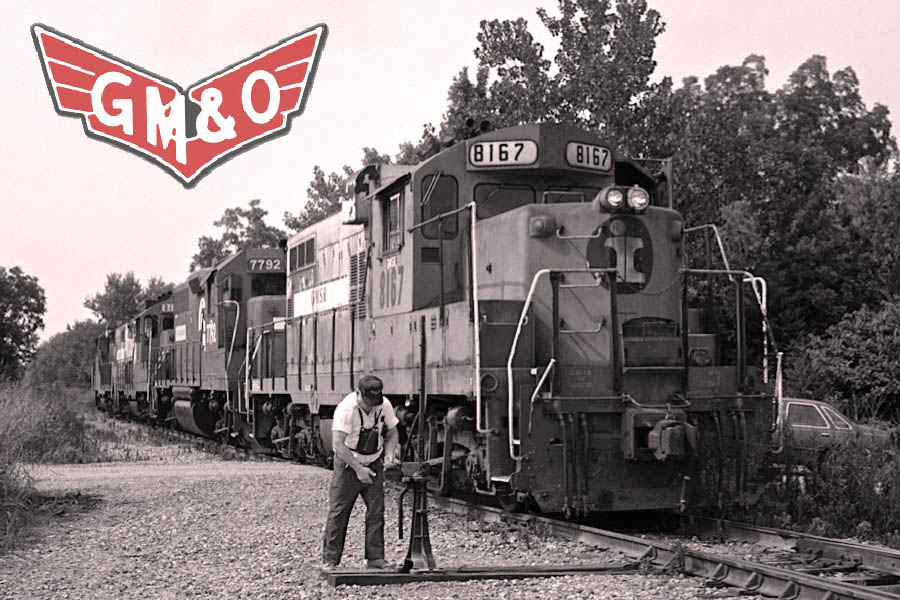
Those Family Traditions
photo Gerhard Anderson / artwork RWH
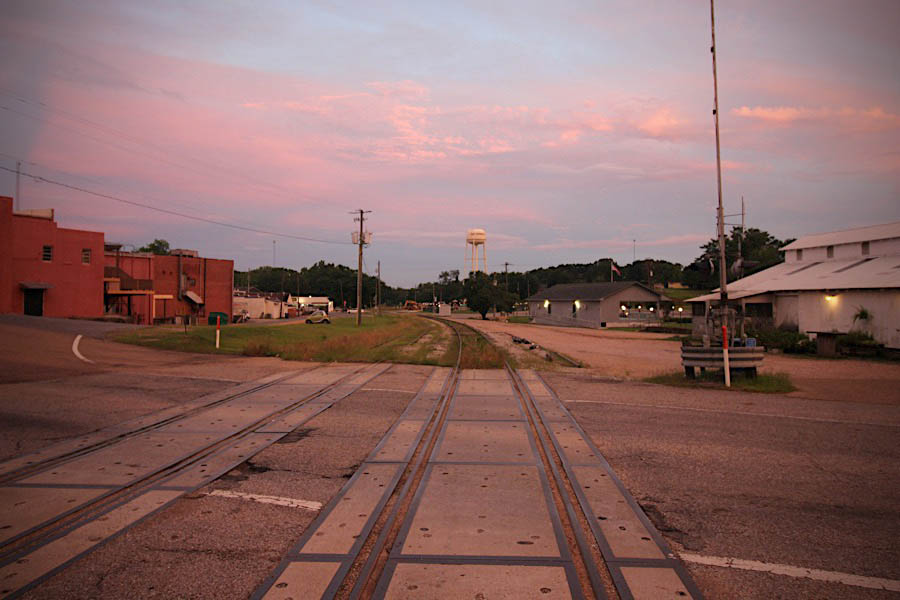
Bay Springs Golden Hour
Bay Springs, Ms / Jun 2020 / RWH

Attendant Off Duty
Bay Springs, Ms / Jun 2020 / RWH
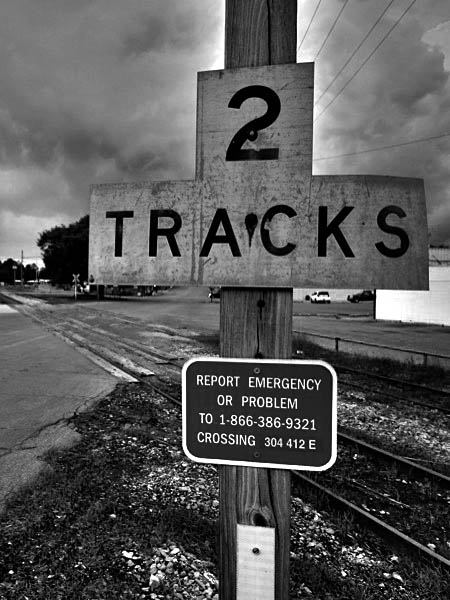
Sixth Avenue
Jun 2020 / RWH
Links / Sources
- Wikipedia article for Gulf & Mississippi
- Railroad Picture Archives Gulf & Mississippi partial roster
- Kansas City Southern - MidSouth / SouthRail successor
- Edward A. Lewis, American Shortline Railway Guide - Third Edition (Kalmbach, 1986) 95

